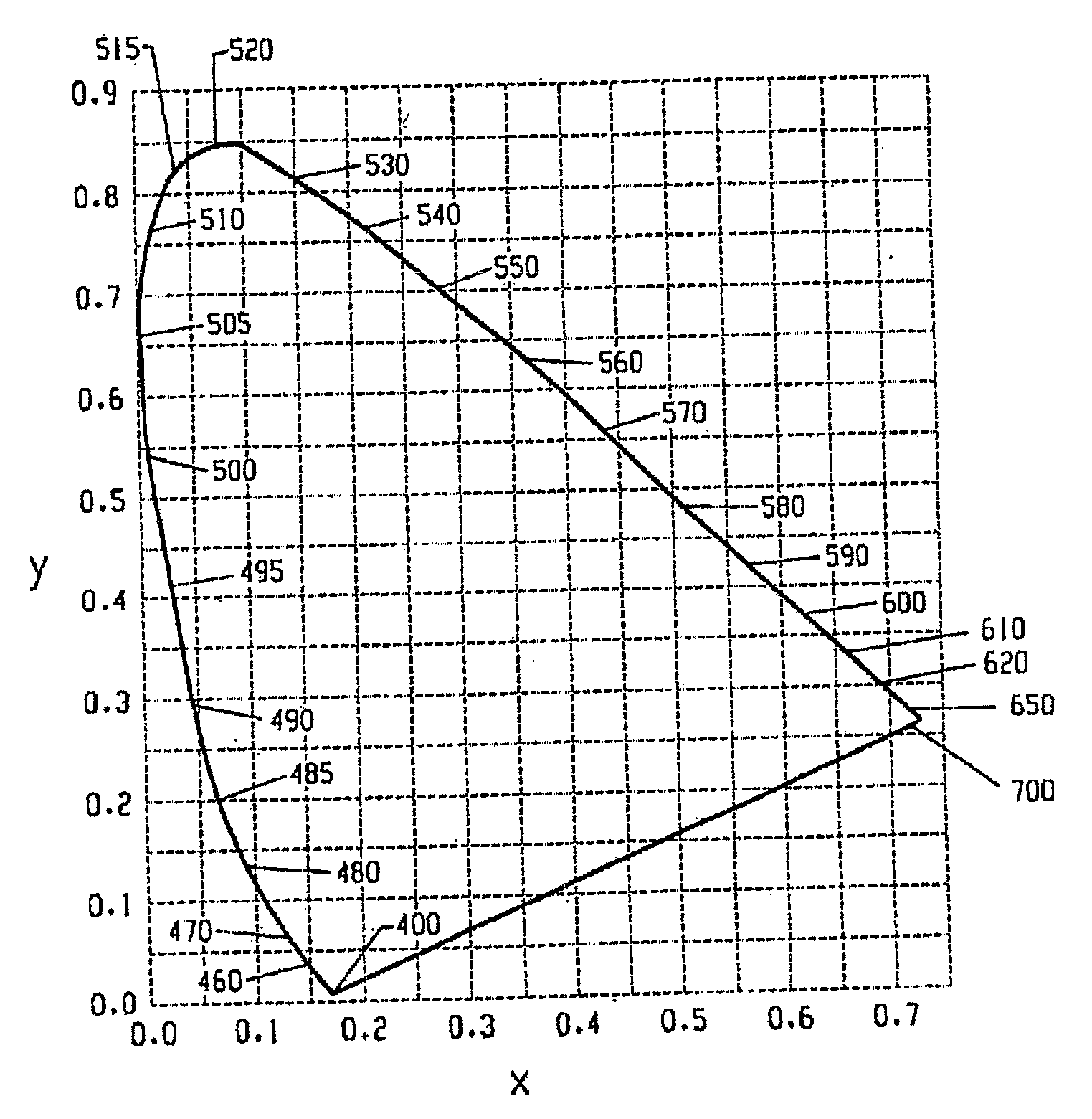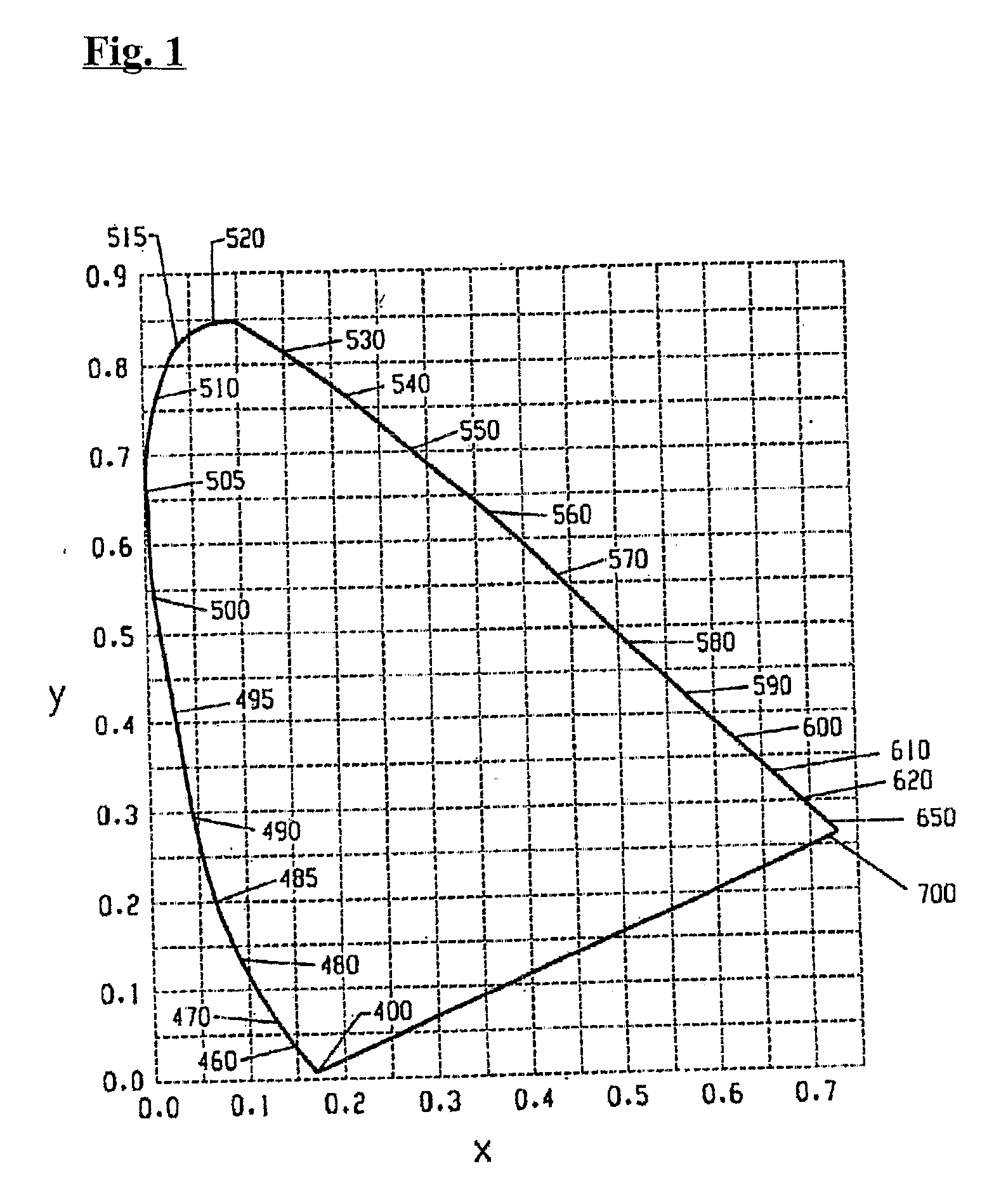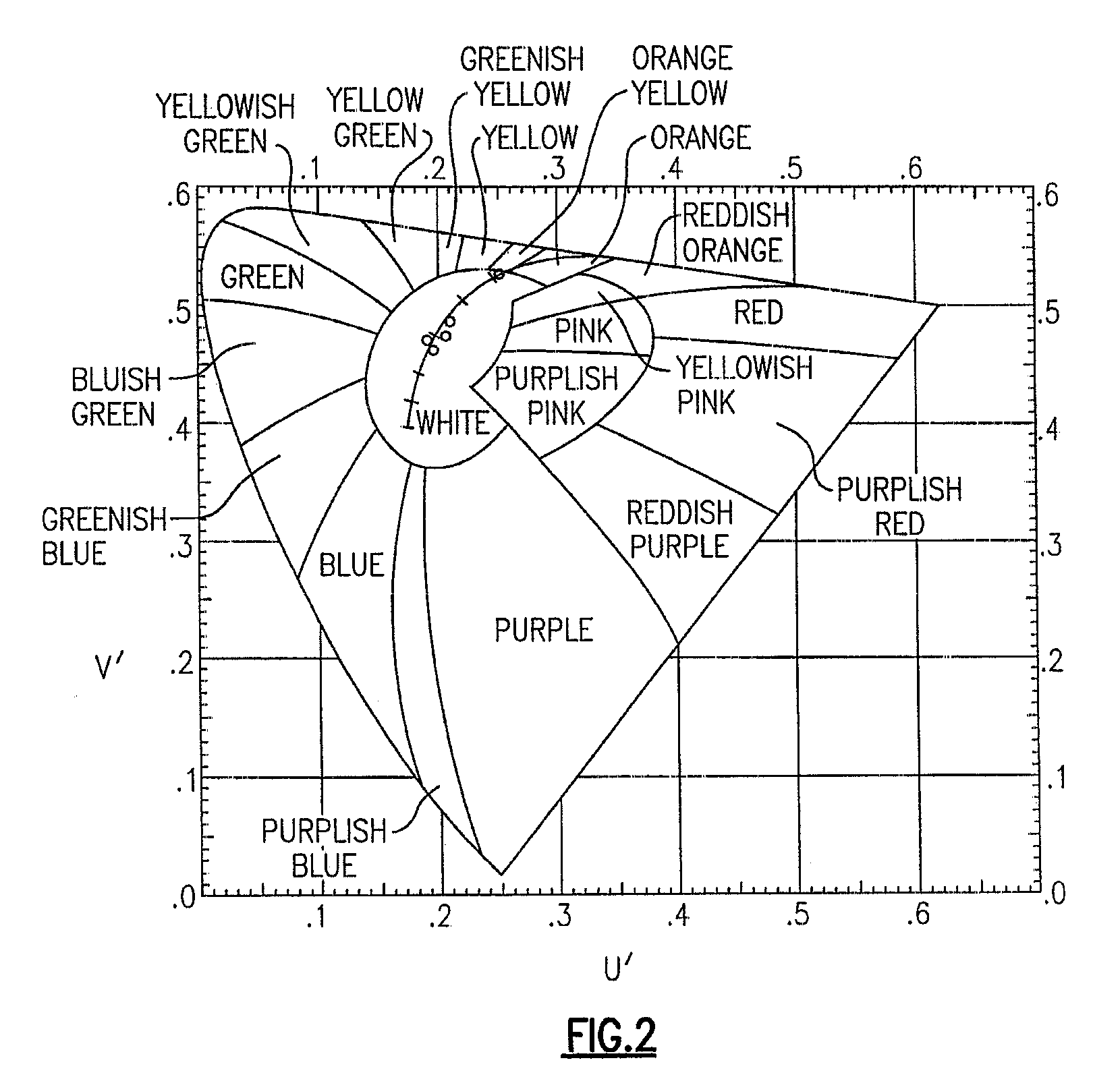Lighting device and method of lighting
a technology of light emitting diodes and light sources, which is applied in the direction of semiconductor devices for light sources, light and heating apparatus, fixed installations, etc., can solve the problems of incandescent light bulbs, fluorescent light bulbs, and light sources that are very energy-inefficient, and are still less efficient as compared to solid-state light emitters such as light emitting diodes
- Summary
- Abstract
- Description
- Claims
- Application Information
AI Technical Summary
Benefits of technology
Problems solved by technology
Method used
Image
Examples
Embodiment Construction
[0071] As noted above, in a first aspect of the present invention, there is provided a lighting device comprising at least one solid state light emitter which, when supplied with electricity of a first wattage, emits output light of a brightness of at least 60 lumens per watt of the electricity. In some embodiments of the first aspect of the present invention, the output light is warm white.
[0072] Efficacy (in lumens per watt), as referred to herein, means brightness as measured relative to outlet energy, i.e., it is a measure of wall plug efficiency (as opposed to values sometimes given on individual components and / or assemblies of components). That is, “efficacy”, as used herein, means lumens obtained from power input to the lighting device (not, e.g., lumens obtained from power input to an LED), i.e., efficacy is determined based on the total power consumed in running the lighting device, as opposed to merely the power consumed within one or more components such as individual LE...
PUM
 Login to View More
Login to View More Abstract
Description
Claims
Application Information
 Login to View More
Login to View More - R&D
- Intellectual Property
- Life Sciences
- Materials
- Tech Scout
- Unparalleled Data Quality
- Higher Quality Content
- 60% Fewer Hallucinations
Browse by: Latest US Patents, China's latest patents, Technical Efficacy Thesaurus, Application Domain, Technology Topic, Popular Technical Reports.
© 2025 PatSnap. All rights reserved.Legal|Privacy policy|Modern Slavery Act Transparency Statement|Sitemap|About US| Contact US: help@patsnap.com



